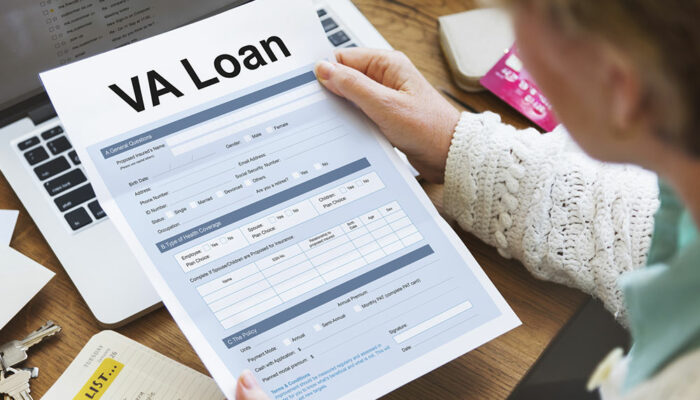A guide to various aspects of veterans loans
A veterans loan or a VA loan is a loan that is available via a program that was started by the Veterans Administration, which is now called the United States Department of Veterans Affairs. The qualifying standards are set according to VA; moreover, it lists out the mortgage terms offered.

Different types of VA loans
There are different types of VA loans for you to choose from. These include:
- Cash-out refinance loan
With this loan, you can avail of more than 100% of the home equity. So, the veteran mortgage holders can borrow against the home equity amount to clear their debt, make home improvements, or replenish the savings to buy something or fund a grandchild’s schooling. It certainly brings in higher borrowing power as compared to FHA (Federal Housing Administration), USDA (United States Department of Agriculture), or a conventional loan. As stated, it lets you avail of 100% of the equity of the house via VA financing scheme, whereas the conventional loan limit is only 80%, and the FHA gets you to access up to 85% of the home value. - Purchase loan
With the purchase loan of the VA, veterans have an opportunity to buy a home at a more competitive rate of interest. In most cases, the purchase loans do not even need a private mortgage insurance cover or any down payment. It is certainly the biggest advantage of this VA loan. - IRRRL
IRRRL, which stands for the Interest Rate Reduction Refinance Loan, is regarded by many as a streamline refinance option. With an IRRL, you can avail of a low rate of interest in refinancing the prevailing VA loan. The good thing about the IRRL is that you do not require any minimum income to be eligible for the loan. Moreover, property or home appraisal is not needed. - Native American direct loan
It is a loan program via which the native veterans of America can finance the construction, purchase, or home improvement projects on the federal trust land. With these loans, a lower interest rate is also prominent. - Adapted housing grants
Under this housing grant scheme, veterans who face a total and permanent disability (that is service-related) are helped in building or purchasing an adapted home or performing modifications in their existing homes to cater to this disability.
Am I eligible?
Well, of course, there are a bunch of benefits of veterans loans, but are you eligible to avail of these? Let’s find out.
What many do not know that a VA loan is not just limited to the veterans. Rather, it extends to different military personnel. The broad profiles that are eligible for this loan are as follow:
- Officers who are employed with the National Oceanic and Atmospheric Administration
- National Guard members
- Service persons who are on active duty
- Cadets from the Coast Guard Academy or the US Military or the Air Force
- Surviving spouses of the deceased veterans
- Reservists
- U.S. Naval Academy’s Midshipmen
However, not everyone from the above-listed backgrounds is eligible for a VA loan. There is a certain term of service that needs to be fulfilled to be eligible for the loan.
Term of service
The VA home loan can be availed by veterans (unless they are discharged dishonorably) and the active-duty servicemen. In certain cases, the Veteran Authority loans can also be availed by the family member of deceased veterans. However, to be given access to these funds, you should meet either one of the listed requirements:
- You should have served an active duty time of 90 days during wartime
- You should have served an active duty time of 181 days during peacetime
- You lost your spouse while he/she was in the line of duty, and you have been single since then
- You were with the National Guard or in the reserves for at least six years
The thing about your VA loan eligibility is that there’s no expiry, meaning if you qualify today, you’ll be eligible for a lifetime. Consequently, veterans who earned this benefit a long time ago can capitalize on it when they wish to buy themselves a home.
Advantages of VA loans
VA loans offer various benefits. Here, we cover ten of these:
- A down payment is not required
As you know, almost every home loan program that you opt for will require at least some amount of down payment. However, a VA loan is a true exception to this. Here, instead of paying approximately 10% to 20% of the value of the home in cash upfront, you can get the entire financing, which is equivalent to 100% of the price of the property. - Mortgage insurance is not needed
In conventional loans, if you pay any down payment that is lower than 20%, then you’ll have to pay mortgage insurance. For conventional loans, this insurance amount is called the PMI or Private Mortgage Insurance. On the other hand, for the FHP (First-time Homebuyer Program) loans, this insurance amount is called the MIP or the Mortgage Insurance Premium. Insurance is primarily paid as a protection to the lender if the borrower defaults in the loan. However, it is believed that veterans, by the virtue of their conduct, wouldn’t do anything to deceive the lending company or the bank. Given the fact that VA loans neither require mortgage insurance nor any down payment, it makes them quite affordable upfront as well as throughout the loan tenure. - Government guarantees such loans
Now, you must be wondering how come veterans loans come with such incredible benefits. Well, the reason is that a chunk of VA loans is always guaranteed by the federal government. This means that even if the borrower is unable to repay the lender his monthly due amount, irrespective of the reason, the government will repay this amount to the lender. Because of this reason, many lending agencies offer veterans these loans with exquisite terms. - Possibility to get competitive interest rates
The VA neither funds nor offers you your VA loans. Moreover, the mortgage terms of the loan are not determined by the administration. It is the banks of the US, mortgage lenders, credit unions, as well as, the loan institutions that offer these loans directly to the veterans. Each lending agency sets its fees and rates for the loans. Thus, it implies that the lending fees and the rates might be different for different agencies. You must certainly shop around, compare the different available rates, and then pick the veterans loan that best appeals to you according to your budget. - No penalty on pre-payment
In case you do not wish to continue owning your home, the terms of the veterans loan wouldn’t restrict you from selling it. Moreover, there’s no fee for early exit or a penalty with regards to the time within which you wish to sell off your home. Also, you wouldn’t even face any particular restrictions concerning the refinancing of your VA loan. You can choose to refinance the current VA loan to any different type of VA loan. Furthermore, you also have a choice of switching to a non-VA mortgage anytime, as desired by you. - Variety of choices available
You can get a VA loan with an adjustable or a fixed interest cost. Moreover, your VA loan can be used to purchase a duplex, condo, house, manufactured home, newly-built home, or any other residential property. You can also use this loan to refinance your existing mortgages, home improvements, or carry out the repair work around the home. Banks also provide a VA loan to make the homes energy-efficient. So, there is a massive choice available. You can reach out to a VA lender to seek help on the type of loan that you should avail of depending on your needs. - Qualification is easier
Just like the other mortgage loans, even VA loans need certain paperwork and documentation. This should include your income statement that gives the lender an assurance that you have enough money to repay your loan. Moreover, you need to share your credit history report. However, in comparison to the other types of loans, the guidelines of VA loans are far more flexible. It is a result of the government guarantee that comes with these VA loans. The Department of VA tries to simplify it for the veterans to refinance or purchase a home. - Loan closing cost is less
In this type of finance, there’s a limit to the closing cost, which the lenders are eligible to charge to the applicants. It certainly makes them way cheaper than any other type of loan. You can save this money and use it for any other purpose, such as home improvement, moving cost, furniture, or any other requirement. - Flexibility on the funding fee
For VA loans, you’ll require some funding fees. It is an upfront cost, which depends on the amount of the loan, the size of the down payment, and the service that determines your eligibility, along with various other factors. As a veteran, you do not have to bear the funding fees in cash specifically. Also, not every VA loan taker has to bear this cost. Usually, the funding fee is waived for the spouses of the veterans who choose to stay single after the death of their in-service partners, or for the veterans who face a certain disability that is service-related, or a veteran who is receiving compensation for the disability. - Loan is assumable
Lastly, your VA loan is assumable, meaning that you can easily transfer this type of loan. This means that you can pass on your loan and the benefits to the next home buyer. However, this can be done only if that buyer is also eligible for a VA loan. It is a massive benefit for homebuyers who decide to sell their homes, especially during the times of an increasing mortgage rate situation. For instance, if the home loan taken by you has a low rate of interest in the present day and the market value increases in the times to come, then that makes your VA more valuable according to the assumption features.
Qualifying for a VA loan
Now, only because you may be eligible for a VA loan does not mean that you qualify to avail of this loan because of your military or veteran status. So, to avail of this loan, you’ll have to mandatorily qualify for the VA in terms of your credit, income, and debt.
- Credit score
As such, there’s no credit score required to qualify for a VA loan. However, the lending agencies will examine your FICO (Fair Isaac Corporation) score, which should be 620 or more than that. Those lending agencies that do allow the lower credit rates do not approve subprime credit. - DTI
DTI is also is known as the Debt to Income Ratio. It is the relationship between your income and debts. Usually, the recommended DTI is not over 41%. This will include your mortgage payment. To calculate this, the VA underwriters will take a total of debts over the month (credit card bills, car EMIs, and household expenses) and divide it with the gross income before tax. - Residual income
Lastly, additional calculations are done to find out the residual income, and this will have a direct impact on your mortgage approval. It will take into account your taxes on income, geographical location, monthly utilities, and then, based on it, a figure will be reached, which is your true cost of living. This amount is reduced from your income and that gives a residual income. It is the means to ensure that you have enough money for the monthly loan repayment. Those with a DTI of over 41% must have a residual income of at least 20%.





